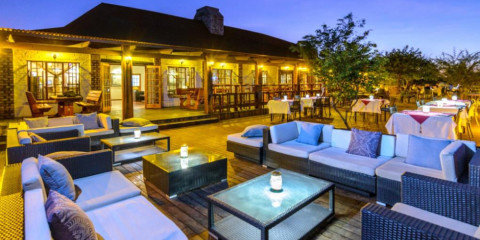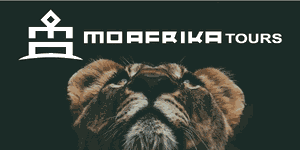Tour Length
Rates in USD $ – Change Currency
Per person, excl. international flightsOperator Rating
Other Tour Features
Filter by Operator
Filter by Accommodation
4-Day Etosha Safari Tours
A 4-day Etosha National Park safari is one of the most amazing safari experiences you can have, not just in Namibia, but anywhere on the continent. Etosha is one of Africa’s greatest national parks, both in terms of the wildlife you can see and the landscapes you’ll get to explore. It also has some of the best accommodations in the country. Four days in Etosha allows you to experience nearly everything the park has to offer while still having time to relax. And visiting over 4 days increases your chances of spotting all the animals you came so far to see.
-

4-Day Etosha Wild Escape Camping Safari
$1,470 to $1,677 pp (USD)
Namibia: Self-driveBudgetCamping
You Visit: Windhoek (Start), Western Etosha NP, Windhoek Airport (End)

Southbound Tours
5.0/5 – 20 Reviews
-
_1514537404.480x240-53.jpg)
4-Day Etosha & Swakopmund Short Trip
$1,302 to $1,401 pp (USD)
Scheduled Start DatesNamibia: Shared tour (max 10 people per vehicle)
Mid-range Lodge & HotelYou Visit: Windhoek (Start), Etosha NP, Eastern Etosha NP, Swakopmund (City), Windhoek (End)

Indigo Safaris
4.9/5 – 180 Reviews
-
Top Rated Operator

4-Day Etosha & Swakopmund Adventure Lodge Safari
$1,302 to $1,387 pp (USD)
Scheduled Start DatesNamibia: Shared tour (max 10 people per vehicle)
Mid-range Lodge & HotelYou Visit: Windhoek (Start), Etosha NP, Swakopmund (City), Windhoek (End)

MoAfrika Tours
4.9/5 – 3,627 Reviews
-
Tour Operators Offering Custom Tours
Didn’t find the tour you were looking for? Get a free quote for a custom tour from the tour operators below. They can arrange private tours to any destination in Namibia.
7 Questions About 4-Day Etosha Safaris

Answered by
Anthony Ham
Anthony is a writer and author of more than 150 Lonely Planet guidebooks, including ‘Botswana & Namibia’ and ‘Southern Africa’. He writes about safaris and Namibia, as well as the wider region, for publications worldwide. He is author of ‘The Last Lions of Africa’ and ‘The Man Who Loved Pink Dolphins’.› More about Anthony
7 Questions About 4-Day Etosha Safaris
 Anthony Ham
Anthony Ham
Is 4 days a good length for an Etosha National Park trip?
“Four days in Etosha National Park is an excellent amount of time for a safari. Of course, it is such a fantastic park that even after 4 days you may still wish you had more time here. But that could also be how you feel if you stay and explore Etosha for a month! It is important to understand what’s involved in a 4-day Etosha safari. Most notably, it means that you have 2 full days in the park. On day 1 you will travel to the park, and on day 4 you will depart and continue your onward journey. So you can look forward to 3 nights in or around Etosha. It means you will most likely have time for six game drives at the best times of the day (early morning and late afternoon when animals are most active). You might even have the opportunity for additional drives if you’re lucky, and depending on what time you arrive and leave. Etosha is a really large park, but with 2 full days, you should be able to explore quite widely and also get to know one or two areas of the park especially well.”
1What kind of tours are available for a 4-day Etosha safari?
“There are three different kinds of tours that are possible for your 4-day Etosha safari: private, group or self-drive. On a private safari, you will have the guide, vehicle and driver all for yourself and those traveling with you. This is the most expensive type of tour because you’ll have to pay for everything on your own. On a group safari, you’ll share the experiences and costs with other travelers. And on a self-drive safari, you’ll have your own vehicle (a 4WD), and you’ll be both your own driver and guide. If your time in Etosha is part of a longer, more wide-ranging safari tour (as many Etosha safaris are), it might be combined with other world-class Namibian destinations, such as the Sossusvlei sand dunes in Namib-Naukluft National Park or the Skeleton Coast. You can also visit Etosha as part of a northern Namibian tour, which might include regions such as Kaokoland and Damaraland.”
2What activities are available on a trip in Etosha?
“The heart and soul of a 4-day Etosha safari is the game drive. If you’re on a group or private safari, you’ll go on game drives with a guide and driver in an open-sided 4WD safari vehicle with a canvas roof and tiered seating. This classic safari experience is a brilliant way to see lots of animals and learn a lot from your guide in the process. On a self-drive safari, you’ll drive your own vehicle and won’t have a guide. But you alone determine where to go and how long to stay at each wildlife sighting. Although they’re not permitted inside the national park, activities that might be possible in one of the surrounding conservancies include walking safaris and cultural visits to a local village or community project.”
3Which animals might I see in Etosha?
“Some of the animals you’re most likely to see in Etosha include elephant and rhino. The elephants are often caked in the ghostly Etosha dust, which gives them a unique look. Black rhino are commonly seen around the floodlit waterholes (which are right next to some of the camps) after dark. Other animals that you have a good chance of spotting include blue wildebeest, zebra, springbok, gemsbok and eland. Of the predators, lion and spotted hyena are the easiest to see, although the park does have very small and secretive populations of leopard and cheetah. Etosha specials that you would need to be extremely lucky to see include two near-endemic antelopes found only in Namibia and Angola: the elegant black-faced impala and the tiny Damara dik-dik. Keep an eye out also for honey badger and bat-eared fox.”
4What type of luxury accommodations are available in the park?
“Etosha has a wonderful range of luxury accommodations, with all kinds of tented camps and lodges to choose from. Most of the luxury places are just outside the park overlooking a waterhole that is popular with wildlife. The exclusivity of these places is enhanced by the fact that they are usually located in private or community conservancies, where access is limited to those staying at a select few lodges or tented camps within the conservancy’s boundaries. If you’re staying in a luxury tented camp, you’ll sleep in a canvas safari tent with an en suite bathroom. The better ones are spacious and come with wooden safari furnishings (such as a writing desk and wooden chest), private terrace, mosquito nets and wooden floors. Some even have an outdoor shower area and private plunge pool. You can lie awake at night and listen to lions roar and the other night sounds of Etosha. Lodge-style rooms are often just as luxurious with many of the same features, but they have four walls.”
5What is the best time of year for a 4-day Etosha safari?
“The best time to go on safari in Etosha is during the Dry season, from May to October. The months of May and June are especially good. You can expect dry conditions with clear skies (although it can be quite dusty), as well as milder temperatures. Temperatures can really start to rise in October ahead of the Wet season rains. High season generally runs from July to November. These are the months of the highest prices and largest number of visitors. With that in mind, May and June can be good for a cheaper, less-crowded experience.”
6How much will this safari cost?
“If you’re visiting Etosha on a budget camping safari, you can expect the cost of your 4-day trip to start at around US$175 to US$200 per person per day. At the other end of the scale, a luxury, all-inclusive safari could cost US$1,000 per person per day, or even more. Factors to consider when calculating the cost of your safari include which accommodations and level of comfort you choose, as well as the season when you travel. Also important is the type of safari you’re on: a private safari will cost quite a lot more than a group safari, with a self-drive safari somewhere in between. Always make sure that you understand what is included in the price quoted to you by any safari operator. You can generally expect the following to be included on a group or private safari: transfers, accommodations (including any camping equipment if needed), fuel, meals, most drinks, guide, driver, vehicle, park entry fees and activities such as game drives. On a self-drive safari, you’ll pay for your vehicle (which may also be your accommodations) and fuel, and you’ll need to carry your own supplies.”
7Etosha Reviews

Emma is an award-winning travel writer for Rough Guides, National Geographic Traveller, Travel Africa magazine and The Independent.
Herds in the Heat Haze
Namibia’s flagship park, Etosha, is easily one of the finest places in the world to watch wildlife, and one of my personal favourites. I’d recommend spending several days here. The park’s dominant feature is the 120km-wide Etosha Pan,...

Mike is an award-winning wildlife writer, former editor of Travel Zambia magazine and author of the Bradt Guide to Southern African Wildlife.
White Dust and Waterholes
Etosha’s harsh landscape is not to everyone’s taste: the wilderness of dusty, rubble-strewn thorn scrub surrounding the vast, featureless salt pan is impressive rather than beautiful. The wildlife, however, is consistently outstanding...
 CA
CA
I liked seeing the variety of animals. I was amazed at how close we were to the animals. The water holes provide an excellent opportunity to see many animals up close - they come to you rather than you to them.
 US
US
Don't Miss Staying Up at the Waterholes
Visited Namibia and Etosha after spending a week in Kenya. While not as game rich or scenic as the parks in Kenya, Etosha certainly has a character in its own. Etosha is unique because of its sprawling dry landscape and its waterholes that...
 NL
NL
Etosha is stunning. It has a great infrastructure but it is a pity that maintenance is apparently not a priority. Roads are poor compared to other parts of the country and the NWS accommodations could use a make over.
 US
US
It is breathtaking. Unique and beautiful place.I love everything the wildlife and the nature amazing
Etosha is home to a range of wonderful species, black rhinos, lions and elephants. The reserve is doing a excellent work protecting, rehabilitating the animals. The service was excellent respectful staff. Accommodation was amazing, the...

